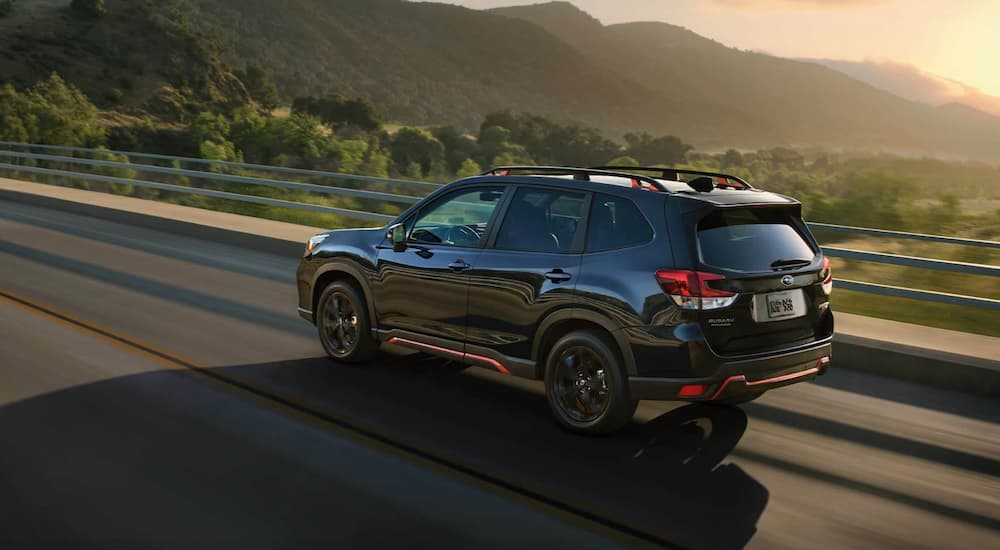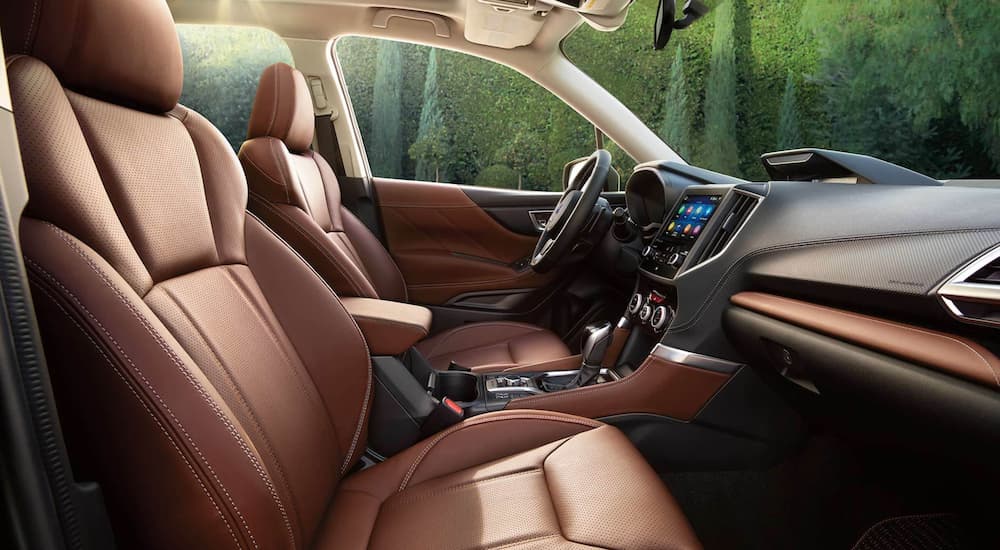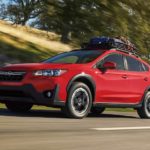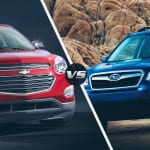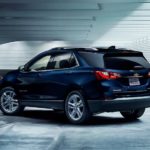In 1968, Subaru released a little vehicle called the 360. The market slogan was “Cheap and Ugly,” but things have surely changed significantly since then. Subaru’s modern lineup of vehicles is significantly larger, for starters. The term “cheap” has also been replaced with “economical.”
But while Subaru’s rugged visage has undergone several updates over the past five decades, it certainly is an acquired taste to many. This is especially true of the Subaru Forester, which arrived on the market in 1998 to divided opinions. And yet, as any Subaru Forester dealer will tell you, it’s one heck of an SUV.
So how did we get from “Cheap and Ugly” to “SUV of the Year?” And does the Subaru Forester belong on your personal shopping list? Over the years, the Forester has demonstrated that it is a good and worthy vehicle that offers the right blend of fancy and functional to make many drivers very happy. Whether you’re shopping for a new or used Suby, it’s not a bad idea to give that old chestnut the Forester a closer look. You might just be surprised by what you find.
The Humble Journey of the Subaru Forester
Some SUVs are particularly celebrated for their history—one key example is the Jeep Wrangler’s famous role as a wartime vehicle. But for some vehicles, the origin story isn’t necessarily important, but serves more as interesting trivia to bring up—especially when drawn into the inevitable discussion of who amongst your buddies has the coolest car. And yet, you’ve probably never wondered where the Subaru Forester came from, or why.
Interestingly enough, the first four-wheel drive vehicle from Subaru was a wagon. Released in 1975, a four-wheel drive passenger car had never been sold in America before, so this was entirely new territory for the automaker. Today, as we approach the 50-year anniversary of this landmark development, more vehicles are offered in four-wheel drive configuration than ever before. Subaru was clearly onto something important.
The Outback was released in 1998 as the world’s first sport-utility wagon. The Forester arrived in 1998 as an “in-between” alternative size to the Outback and the Impreza. It shared the same platform as the Impreza, but stood taller than the Outback. First-generation models were somewhat awkwardly shaped, with a kinda-boxy, too-tall, sedan-front-with-a-minivan-body look that raised the curiosity of drivers and experts alike.
However, while that weird Pope-mobile bubble of a back looked strange from the outside, it allowed the seats to be placed so that everyone inside could stretch out comfortably. The tailgate raised to a near-vertical position, which was ideal for loading and unloading objects of all sizes, which could be accommodated even better with the 60/40 split-folding rear seats. With its generous accommodations and standard all-wheel drive, the early Forester lived up to its slogan: “SUV Tough, Car Easy.”
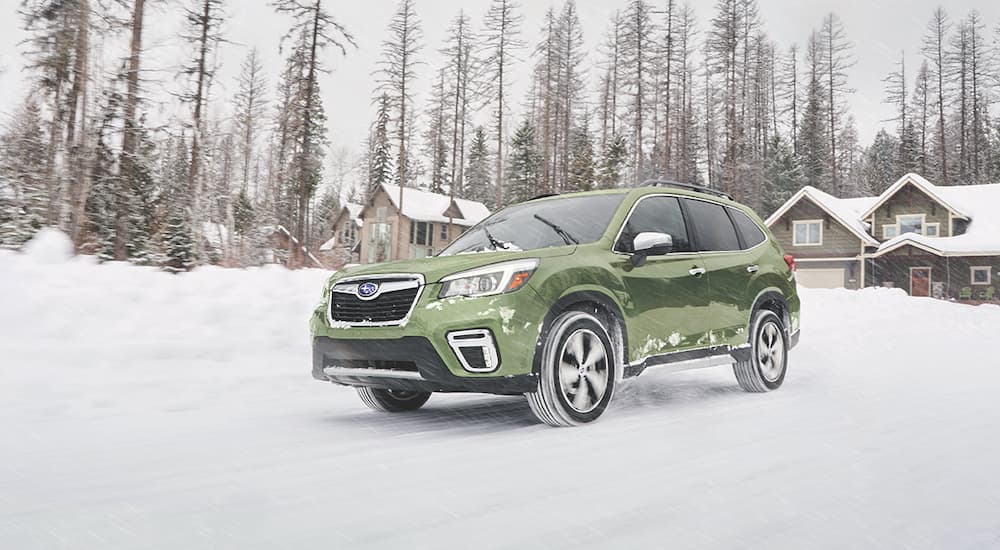
The Subaru Forester Takes on the World
Let’s flash forward a bit in order to cover all the good parts. The first-generation Forester gathered a lot of questioning looks. After all, who would want full-time AWD on a vehicle that’s intended to be driven in the city? As SUVs became the quasi-official vehicle of the American suburbs, drivers feared that they would use more fuel than would be prudent.
But Subaru had already considered that. Despite the fact that the brand wasn’t yet fully associated with the outdoors and off-roading, they had taken their research on all-wheel drive technology to the limit. In 1998, a Forester with a manual transmission had a combined fuel economy of 21 miles per gallon, and those with an automatic transmission dropped to 20 miles per gallon combined. A 1998 Jeep Grand Cherokee’s combined fuel consumption ranged from 13-16 miles per gallon, regardless of whether it was equipped with all-wheel drive. Critics soon realized that wasn’t a good point to try to argue.
Today, the Subaru Forester enjoys a combined fuel economy of 29 miles per gallon, but that’s not the only thing that’s changed. Obviously, technology has come a long way since 1998, so standard features like the SUBARU STARLINK Multimedia system with Apple CarPlay and Android Auto compatibility is kind of a “gimme,” in that the market for vehicles without these features is pretty slim. But there are other improvements that take the Forester from “SUV” to “Sweet SUV.”
Subaru’s EyeSight Driver Assist Technology is one such improvement. Standard on all Forester models, this system has allowed the Forester to earn “Superior” ratings from the Insurance Institute for Highway Safety, or IIHS. Included are Pre-Collision Throttle Management, Pre-Collision Braking, Lane Keep Assist, and Adaptive Cruise Control. Blind Spot Detection and Rear Cross-Traffic Alert are standard on most trims as well, with Reverse Automatic Braking standard on the Wilderness and Touring trims.
The Subaru Forester’s Overall “Vibe”
“Good vibes only,” right? There might be some confusion as to what kind of SUV the Forester is supposed to be. It has an 8.7” ground clearance (which turns into 9.2” on the Wilderness model) and all-wheel drive, so it does have some off-roading chops. It also has the capability to tow up to 3,000 lbs when properly equipped. And, it includes 74.2 cu.ft. of highly configurable cargo space, which makes it an extraordinary adventure partner or productivity machine.
Comfort and convenience features vary between trims, as with all vehicles. The base Forester is the only model that doesn’t include a panoramic moonroof and heated front seats, and the top Touring trim features things you might not think of when standing on a dealership lot, like a heated steering wheel and heated outboard rear seats.
The base trim has all the features you need to get from Point A to Point B, but moving up to the Premium trim adds a lot of really cool “Why didn’t I think of that?” features, like reclining rear seatbacks. The Sport trim is specifically engineered to be the zippy sibling, with sport-tuned S# SI-Drive mode for full-throttle fun. The Wilderness edition has water-repellent upholstery to match its off-road chops. Leather upholstery is introduced at the Limited trim, and continued into the Touring trim.
Take Another Look at the Subaru Forester
So is the Forester luxury or rugged? Can we say “lugged?” or perhaps “ruxury?” because the Forester is a bit of both. It’s hard to call the base trim “basic,” since it does have more driver assistance technology and comfort and convenience features than the average entry-level, all-wheel drive SUV. Plus, the standard-on-most-trims panoramic moonroof would inspire anyone to go out and experience a scenic drive in their stylish Subaru.
Subaru’s vehicles have a personality of their own, much like every other off-road capable vehicle. But while other vehicles offer all-wheel drive as an option, Subaru has balance and performance on its mind at every tick of the odometer. When you factor in the impressive offerings in the EyeSight safety package, as well as the undeniable benefit of cargo space and towing capability, the Forester looks a lot shinier and more special than other vehicles in its class. Given its humble journey and admirable, continued reliability, perhaps the Forester warrants a second glance after all.
